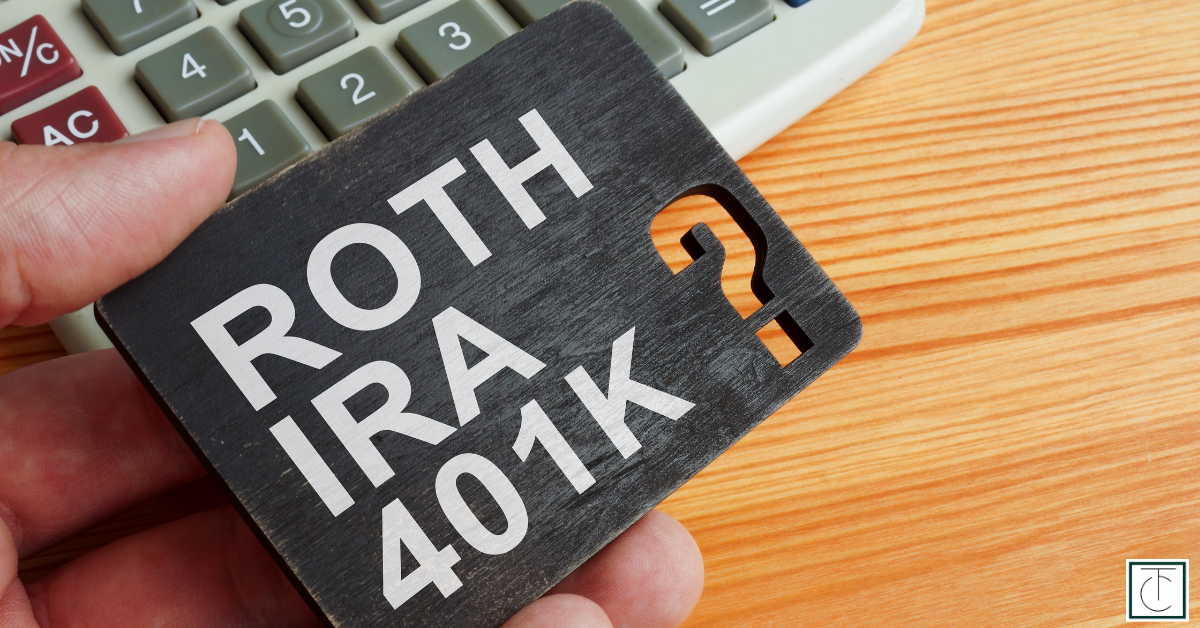When it comes to retirement savings, choosing between a 401(k) vs. IRA is one of the most important financial decisions you’ll make. Both accounts offer unique tax advantages and growth potential, but prioritizing the right one can significantly impact your long-term success. Both offer tax advantages and growth potential, but deciding which one to prioritize can significantly impact your long-term financial success. Let’s break down the key differences, benefits, and the smartest way to allocate your contributions.
Understanding the Basics: 401(k) vs. IRA
What is a 401(k)?
A 401(k) is an employer-sponsored retirement plan that allows employees to contribute a portion of their salary on a tax-deferred basis. Some employers also offer a matching contribution, essentially giving you free money toward your retirement.
Key Benefits of a 401(k): ✅ Higher Contribution Limits: In 2025, the contribution limit is $23,000 for individuals under 50 and $30,500 for those 50+ (with catch-up contributions).
✅ Employer Match: Many employers match a percentage of contributions—this is free money you don’t want to miss.
✅ Pre-Tax Contributions: Reduces taxable income, meaning you pay less in taxes today.
✅ Automatic Payroll Deduction: Makes saving easy and consistent.
What is an IRA?
An Individual Retirement Account (IRA) is a self-directed retirement savings plan that allows tax-advantaged growth. Unlike a 401(k), it’s not tied to an employer, giving you more flexibility over investment choices.
Key Benefits of an IRA: ✅ More Investment Options: Choose from a broader range of stocks, bonds, ETFs, and mutual funds.
✅ Tax Advantages: Traditional IRAs allow pre-tax contributions, while Roth IRAs grow tax-free.
✅ Lower Fees: Many IRAs have fewer fees compared to some employer-sponsored 401(k) plans.
✅ No Employer Dependency: Anyone with earned income can open one.
Step-by-Step Guide: Which One Should You Max Out First?
1️⃣ Max Out Your Employer Match in a 401(k) First
Always contribute enough to get the full employer match first. If your employer matches 100% of your first 5% contribution, that’s a 100% return on your money instantly—better than any stock market return.
📌 Example: If you earn $80,000 and your employer matches 5%, that’s $4,000 of free money if you contribute the same amount.
2️⃣ Next, Max Out a Roth IRA (If Eligible)
Once you’ve secured your employer match, the next best move is contributing to a Roth IRA (if you qualify). Roth IRAs grow tax-free, meaning you won’t owe taxes on withdrawals in retirement.
✅ 2025 Contribution Limit: $7,000 ($8,000 for those 50+).
✅ Income Limit: Single filers must have a Modified Adjusted Gross Income (MAGI) under $161,000, and married couples under $240,000 to contribute fully.
📌 Why a Roth IRA?
- Tax-free growth and withdrawals.
- No Required Minimum Distributions (RMDs).
- Ideal for long-term tax planning and legacy wealth.
3️⃣ If You Still Have Savings Left, Max Out Your 401(k)
After securing the 401(k) match and Roth IRA contributions, the next step is to max out your 401(k).
📌 Why?
- Higher contribution limits ($23,000 vs. $7,000 for IRAs).
- Pre-tax savings reduce taxable income.
- Automatic payroll deductions keep you disciplined.
4️⃣ Still Have More to Invest? Consider a Backdoor Roth IRA or Taxable Brokerage Account
If you’ve maxed out both your 401(k) and IRA, you can still optimize tax efficiency through other methods:
✔ Backdoor Roth IRA: If your income is too high for a direct Roth IRA contribution, consider converting a traditional IRA into a Roth IRA.
✔ Taxable Brokerage Account: Invest in tax-efficient funds to continue growing wealth outside of retirement accounts.
Final Verdict: What’s the Smartest Order?
📌 Best Savings Strategy for Most People: ✅ Step 1: Contribute enough to your 401(k) to get the full employer match. ✅ Step 2: Max out a Roth IRA (if eligible) or a Traditional IRA if your tax rate is high. ✅ Step 3: If possible, max out your 401(k). ✅ Step 4: Invest any remaining funds in a Backdoor Roth IRA or Taxable Brokerage Account.
By following this order, you maximize tax benefits, employer contributions, and long-term growth potential.
If your employer doesn’t offer a 401(k), start with an IRA (preferably a Roth IRA) and invest in a taxable brokerage account once you max it out.
A Roth 401(k) is ideal if you expect to be in a higher tax bracket in retirement, while a Traditional 401(k) is better if you want tax savings now.
Yes! As long as you meet income requirements, you can contribute to both. Just ensure you prioritize based on tax benefits.
Over-contributions may result in penalties. Work with a tax advisor to correct any excess contributions before the tax deadline.
Yes, once you leave a job, you can roll over a 401(k) into a Traditional or Roth IRA for more investment flexibility.
Final Thoughts: Plan Wisely for a Secure Retirement
Knowing where to prioritize your retirement savings can maximize your wealth and minimize your tax burden. By securing your 401(k) match, leveraging a Roth IRA, and maximizing tax-advantaged accounts, you’ll be well on your way to a comfortable retirement.
✅ Want personalized retirement planning advice? Let’s build a strategy tailored to your financial goals.
Thomas Clark is a Series 65 licensed investment advisor and experienced trader. He specializes in investing, retirement planning, and market analysis, helping individuals build wealth and make informed financial decisions.

